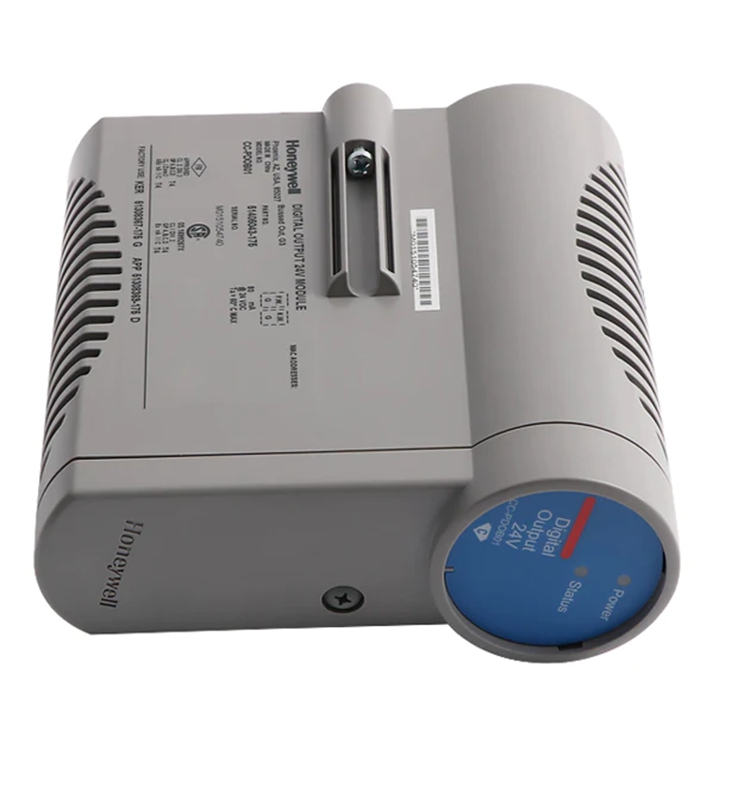HONEYWELL TC810B1013 Interface Module
Brand:HONEYWELL Model number:TC810B1013
Country of origin: United States Product weight:0.4kg
HS code:8517623990
Product Details:
Product Dimensions:
A Honeywell Interface Module is a critical component in various automation, fire, and security systems. It acts as a bridge between the core control panel or system controller and various field devices, sensors, and other systems. The primary function of an interface module is to translate signals and manage communication, ensuring that different components can operate together seamlessly. These modules are essential for expanding a system's capabilities, integrating third-party equipment, or adapting to specific application needs. They come in many forms, each tailored for a specific purpose, such as connecting fire detectors, security sensors, or HVAC equipment to a central controller. They often provide power isolation and signal conditioning to protect the main system from faults in the field wiring.
Product parameters for Honeywell interface modules vary widely depending on their specific application (e.g., fire alarm, security, or building automation). However, common parameters you'd find include:
Input Voltage: The required power supply, typically 24V DC from the main control panel.
Output Voltage/Current: The power provided to field devices, such as 24V DC or specific current loops (e.g., for smoke detectors).
Communication Protocol: The protocol used to communicate with the main controller, which could be proprietary (like Honeywell's Signature Series) or a standard protocol (like BACnet or Modbus).
Number of Channels: The number of inputs or outputs the module supports. For example, a fire interface module might have a single input for a contact device, while a multi-point module might handle dozens of addresses.
Operating Temperature: The specified range for reliable operation, typically for indoor use but some are rated for a broader industrial range.
LED Indicators: Visual indicators for status, faults, or communication activity.
Certifications: Listings from regulatory bodies like UL, CE, and FM, confirming compliance with safety and performance standards.
Mounting Type: How the module is installed, often in a control panel enclosure or on a DIN rail.
Seamless Integration: Designed to work perfectly with Honeywell's own product lines, simplifying system design and installation.
Enhanced System Flexibility: Interface modules allow you to expand a system by adding more devices or different types of devices without replacing the main controller.
Reliability and Safety: Honeywell products are known for their high reliability. Modules provide electrical isolation, protecting the central system from short circuits or other field wiring issues.
Comprehensive Diagnostics: Many modules offer built-in diagnostic features and status LEDs, making it easier to troubleshoot wiring faults or device failures.
Scalability: They enable systems to grow as business needs change, allowing for a phased expansion of security or fire protection coverage.
Simplified Wiring: Often designed to reduce complex wiring, using addressable communication to connect multiple devices on a single wire pair.
Compatibility: Always ensure the specific interface module is compatible with your existing Honeywell control panel and the field devices you plan to connect. Check the product manuals for a compatibility matrix.
Wiring Standards: Follow Honeywell's specific wiring diagrams and recommendations to ensure proper operation and to maintain product listings and certifications. Incorrect wiring can lead to false alarms or system failure.
Power Requirements: Confirm that your system's power supply can support the total current draw of the interface module and all connected field devices.
Addressability: For addressable systems, ensure each module and connected device is assigned a unique address as per the system's programming requirements.
Environmental Conditions: Install the module in a location that meets its specified temperature and humidity range. Avoid locations with excessive dust, moisture, or vibration.
Honeywell interface modules are used across a broad range of industries and applications, including:
Commercial Buildings:
Fire Alarm Systems: Connecting conventional smoke detectors, heat sensors, or manual pull stations to an addressable fire panel.
Security Systems: Integrating door contacts, motion detectors, and other security sensors into a central access control or alarm system.
Industrial Facilities:
Process Control: Linking analog sensors and control devices to a distributed control system (DCS) or PLC.
Gas and Fire Detection: Interfacing specialized gas detectors or flame sensors with the main system.
Residential & Public Spaces:
HVAC Control: Connecting thermostats and dampers to a building automation system.
Emergency Lighting: Providing supervision for emergency lighting circuits.
Healthcare:
Nurse Call Systems: Integrating patient call buttons and status indicators with a central monitoring system.

We have the same series of models in stock. If you don't find the model you need, please contact us and we will provide you with an official quotation!
Honeywell TC805C-1000
Honeywell TC-MDP081
Honeywell TC-MUX021
Honeywell TC810N-1013
Honeywell TC-SMPC01
Honeywell TC-IDJ161
Honeywell TC-IXL061
Honeywell 51305890-175
Honeywell TC810B1013
Honeywell TC631C-1020
Colour:new Warranty: 12 months
Lead Time:3-day working day Price: Please contact us
Shipping Port: Xiamen, China Payment:T/T
Express cooperation: fedex, DHL, UPS and your express account
Service: Professional Sales provides 24 hours /7 days online service
Our service:

Fast delivery, and can be used with your express account.

Competitive Price

Free Shipping

One-year warranty